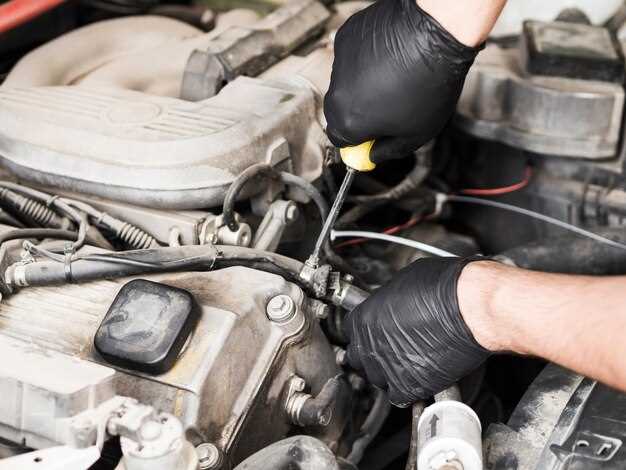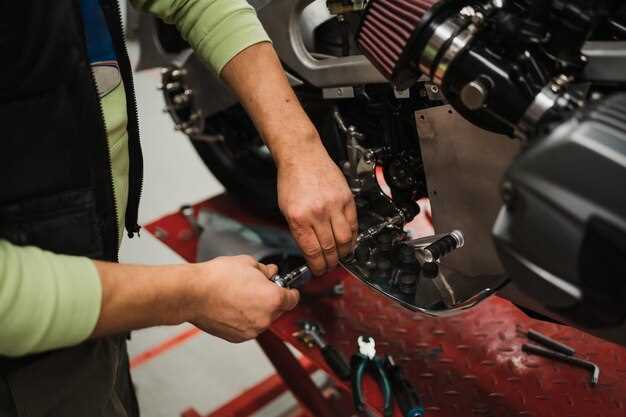

Motorcycle maintenance is crucial for ensuring optimal performance and longevity of your bike. One of the most important aspects of regular maintenance is changing the engine oil. Oil lubricates the moving parts of the engine, reduces friction, and helps dissipate heat. Over time, this oil breaks down and becomes contaminated, which can lead to engine wear and compromised performance.
In this guide, we will provide you with a step-by-step process for changing your motorcycle oil. Whether you’re an experienced rider or a newcomer to motorcycle care, this detailed approach will help you tackle this essential maintenance task with confidence. By following these steps, you can keep your motorcycle running smoothly and efficiently, ultimately enhancing your riding experience.
Before we dive into the actual process, it’s important to gather all the necessary tools and materials. Having everything on hand will streamline the oil change and minimize disruptions. Furthermore, understanding the type of oil recommended for your specific motorcycle model is critical for ensuring proper engine function. Let’s get started with the essentials of changing your motorcycle oil.
Choosing the Right Oil and Tools for Your Motorcycle
Selecting the appropriate oil for your motorcycle is crucial to ensure optimal performance and longevity of the engine. Start by consulting your owner’s manual to identify the recommended oil type, viscosity, and any specific certifications required by the manufacturer.
Most motorcycles require either synthetic or conventional oil. Synthetic oils generally offer better protection, improved performance in extreme temperatures, and longer intervals between oil changes. However, they tend to be more expensive. Conventional oils might suffice for older models or those with simpler engines.
Pay attention to the viscosity rating, which is usually indicated by numbers such as 10W-40. The first number represents the oil’s flow at low temperatures, while the second denotes its viscosity at high temperatures. Choosing the right viscosity is essential for ensuring proper lubrication under various operating conditions.
In addition to oil, you’ll need specific tools to effectively change your motorcycle’s oil. A basic oil change kit should include an oil filter wrench, a socket set, and a drain pan. An oil funnel can help prevent spills when pouring new oil into the engine. Consider having a torque wrench on hand to ensure the oil drain plug and filter are correctly tightened.
If your motorcycle has a hydraulic clutch or a separate transmission fluid system, additional fluids and respective tools may be necessary. Always verify the requirements in your owner’s manual to avoid any compatibility issues.
Finally, invest in high-quality replacement parts, such as oil filters, as these can significantly affect the overall function and health of your engine. Choosing the right oil and tools not only makes the process smoother but also maximizes your motorcycle’s performance.
Draining Old Oil and Replacing the Oil Filter

Begin by preparing your motorcycle for the oil change. Make sure it is parked on a level surface and has cooled down completely for safety. Gather the necessary tools and materials: a wrench, an oil drain pan, a new oil filter, and fresh motorcycle oil. You will also need a funnel for easier pouring.
Locate the oil drain plug, usually found at the bottom of the motorcycle’s engine. Position the oil drain pan directly under the drain plug. Using a wrench, carefully loosen and remove the drain plug. Allow the old oil to completely drain into the pan. This process may take several minutes. Keep an eye out for any metal shavings or debris in the old oil, which could indicate internal engine wear.
Once the oil has drained, replace the drain plug and tighten it securely with the wrench. Next, locate the oil filter, which is typically situated near the oil pan. Use an oil filter wrench to remove the old filter. Be prepared for some residual oil to spill out as you remove it; make sure your drain pan is in place to catch any drips.
Before installing the new oil filter, apply a small amount of fresh oil to the rubber gasket of the new filter. This ensures a good seal and makes it easier to remove during the next oil change. Install the new oil filter by hand, tightening it according to the manufacturer’s specifications–usually, it should be snug but not overly tight.
After replacing the oil filter and ensuring the drain plug is secure, proceed to refill the engine with new motorcycle oil. Consult your owner’s manual for the correct type and amount of oil. Use a funnel to avoid spills while pouring the new oil into the oil fill cap. Once filled, check the oil level with the dipstick or sight glass to ensure it is within the recommended range.
With the oil and filter changed, run the engine for a few moments to circulate the new oil. Afterward, check for any leaks around the oil filter and drain plug. Your motorcycle is now ready for the road with fresh oil and a new filter.
Filling with New Oil and Checking Levels

After draining the old oil, it is time to fill your motorcycle with new oil. Begin by selecting the correct type and viscosity of oil as specified in your owner’s manual. Using a funnel can help prevent spills during the filling process.
Locate the oil fill cap on your motorcycle, which is usually situated on the side of the engine. Remove the cap and insert the funnel. Slowly pour the new oil into the engine, ensuring you do not overfill. It is recommended to add oil in increments, checking the level frequently.
Once you have added the oil, replace the fill cap securely. Start the motorcycle and let it run for a minute or two. This allows the new oil to circulate through the engine and lubricate all components adequately.
After the engine has warmed up, turn it off and let it sit for a minute. This allows the oil to settle. Now, check the oil level again using the dipstick or sight glass, depending on your motorcycle’s design.
If the oil level is below the designated mark, add more oil in small amounts, rechecking the level each time. Ensure the oil level falls within the recommended range marked on the dipstick or sight glass. Proper oil levels are crucial for optimal engine performance and longevity.
Once satisfied with the oil level, securely replace the dipstick or close the sight glass, and you are ready to ride. Regularly checking oil levels between changes helps maintain your motorcycle’s health.






